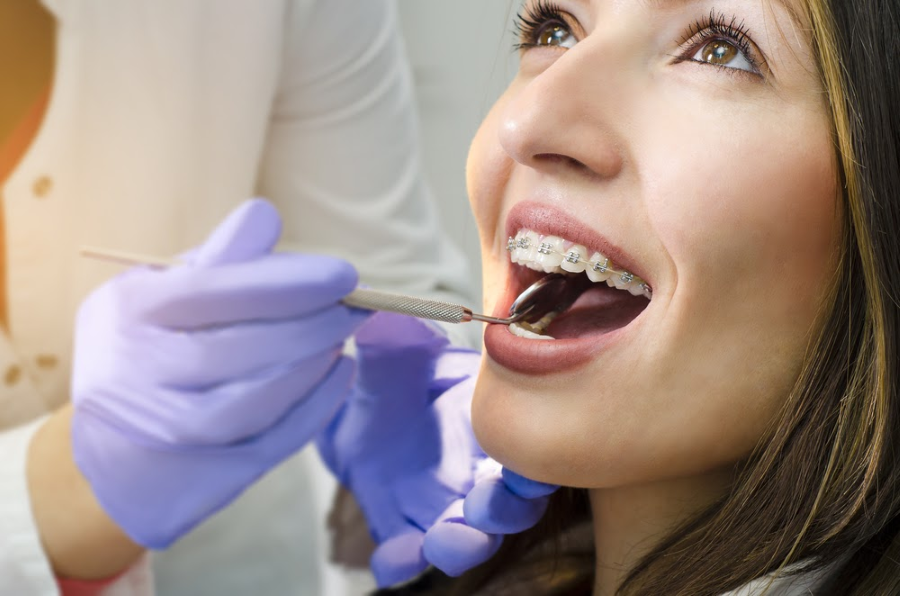Some Known Facts About Legacy Orthodontics.
Some Known Facts About Legacy Orthodontics.
Blog Article
See This Report about Legacy Orthodontics
Table of ContentsExcitement About Legacy OrthodonticsLegacy Orthodontics for BeginnersLegacy Orthodontics - An OverviewExcitement About Legacy OrthodonticsSome Known Factual Statements About Legacy Orthodontics
At Advanced Orthodontics, we provide clients with a all natural treatment experience. On top of that, we supply adjustable treatment routines, versatile repayment choices and a fun, satisfying experience. leesburg orthodontics. Call ( 480) 357-4900 today to find out more and timetable an appointment.An orthodontist is a dental professional educated to diagnose, stop, and treat teeth and jaw irregularities. They fix existing conditions and are trained to identify problems that may develop in the future. Orthodontists collaborate with people of any ages, from children to adults. Individuals typically link a best smile with good health.
Malocclusion, or misaligned teeth, can result in dental concerns, consisting of tooth decay, gum tissue illness, and hard or agonizing chewing. Not everyone is birthed with straight teeth. If you have a negative bite or big spaces between your teeth, you may intend to get in touch with a dentist specializing in orthodontic treatment.
Legacy Orthodontics for Dummies
( Photo Credit History: DigitalVision/Getty Images) Orthodontists use fixed and removable oral tools, like braces, retainers, and bands, to alter the placement of teeth in your mouth. Orthodontic treatment is for oral problems, including: Misaligned teethBite issues, like an overbite or an underbiteCrowded teeth or teeth that are too far apartJaw misalignmentThe goal of orthodontic therapy is to improve your bite.
A healthy and balanced bite guarantees you can consume, eat, and talk correctly. While you might think about orthodontists as primarily for children or teenagers who need braces, they can remedy dental problems at any age. Orthodontists participate in college, oral school, and orthodontic college. After graduation, they spend 2 or 3 years in an orthodontic residency program.
All orthodontists are dental practitioners, but not all dental practitioners are orthodontists. Orthodontic residency programs use intensive, concentrated direction for oral specialists. They focus on two locations: Just how to correctly and securely relocate teeth Just how to correctly assist growth in the teeth, jaw, and faceOnce an orthodontist has completed training, they have the alternative to come to be board accredited.
Examine This Report about Legacy Orthodontics
Malocclusion leads to tooth congestion, an askew jaw, or uneven bite patterns. Malocclusion is typically treated with: Your orthodontist attaches steel, ceramic, or plastic square bonds to your teeth.
Some individuals need a headwear to assist my website move teeth into line with pressure from outside the mouth. A retainer is a custom device that keeps your teeth in area.
They're most typically utilized on children. They can develop added room in the mouth without having to draw teeth. If you have a severe underbite or overbite, you might require orthognathic surgical treatment (also called orthodontic surgical treatment) to lengthen or reduce your jaw. Orthodontists make use of wires, surgical screws, or plates to support your jaw bone.
You may require to see an orthodontist if you have: Crowding or not enough space for every one of your teethOverbite, when your top teeth come over your base teethUnderbite, when your bottom teeth are also far forwardSpacing or problems with gapsCrossbite, which is when your upper teeth fit behind your base teeth when your mouth is closedOpen bite or an upright void between your front base and upper teethMisplaced midline, when the facility of your base and upper teeth don't align Correcting a dental malocclusion can: Make biting, chewing, and talking easierImprove the symmetry of our face and your overall appearanceEase pain from temporomandibular joint conditionsDifferent your teeth and make them less complicated to clean up, assisting protect against dental cavity or cavities It's frequently a dental expert that first notices misaligned teeth throughout a regular test.
The 8-Second Trick For Legacy Orthodontics

During your first orthodontic examination, you'll likely have: A dental examPhotos taken of your face and smileDental X-raysPanoramic (360 level) X-rays of your face and headImpressions to produce molds of your teethThese tests will aid your orthodontist understand exactly how to proceed with your therapy. leesburg clear braces. An orthodontist is a dental expert that's had training to treat your teeth and jaw
Orthodontists may carry out surgical treatment, exams,X-rays,and more to assist you obtain a much more comfortable, much healthier smile. An orthodontist is concentrated on your bite, so something like a cracked tooth would be managed by a dental practitioner. Orthodontists are dental practitioners but not all dental experts are orthodontists. Orthodontists are concentrated on your bite, or the way your teeth meshed, and the straightness of your teeth.
Ever before questioned how celebrities always appear to have completely straightened teeth? Orthodontists are dental specialists who focus on dealing with abnormalities in the teeth and jaws.
Fascination About Legacy Orthodontics

While dental braces are the most frequently identified orthodontic treatment, orthodontists have a varied toolkit at their disposal. The specific method selected relies on the extent of the case, the individual's age, and specific preferences. These tried-and-true braces use a system of braces adhered to the teeth and connected by cables.
Clear aligners, like Invisalign, are a preferred alternative for individuals seeking an extra very discreet treatment choice. These removable trays are personalized to gradually shift the teeth's position. Headwear may be used in conjunction with dental braces or aligners to use added targeted forces, specifically for correcting jaw disparities. In instances of slim jaws, palatal expanders can be used to create space for proper tooth alignment.
Report this page